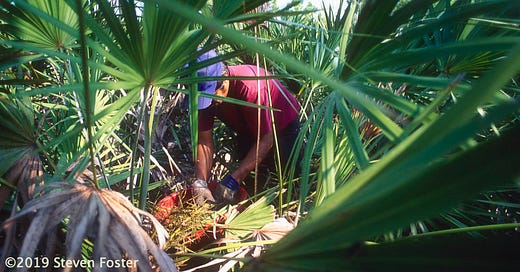Where do Medicinal Plants Come From?
As a student of herbal medicine, I learned about using elder berries to boost the immune systems, nettles as a tonic, lemon balm and skullcap to soothe nerves. We prepared tinctures and medicinal teas from fresh and dried plants. On herb walks we learned to identify lady’s mantle, valerian, black cohosh and goldenseal. In between the monthly classes, we were instructed to build our materia medica, creating a file for each plant with information about the common and botanical names, habitat and growing conditions, uses of the plant, and our experiences of its effects in our bodies.
But we didn’t learn about where those plants came from, who grew or harvested them, how they were processed, the different hands that handled them on their journey from seed to shelf. We didn’t learn that because few people were asking those questions. Consumers were increasingly concerned about where their food came from. They weren’t so worried about their herbal products or dietary supplements.
Where is the Information?
This is changing. Even so it is hard to share concrete information about plants in commerce because it is hard to find concrete information. The herb trade was built on secrecy and a lack of transparency. Companies don’t like to share their suppliers with their competition. Certifications, beginning with certified organic in the early 1970s and continuing with third party voluntary standards and regulations like Good Manufacturing Practices, are making transparency more attainable. This makes it easier to begin finding information on origins of botanical raw materials.
Yet, even with that awareness, it is difficult to gather this information because it is different for each plant. Unlike coffee or cacao, the story of black cohosh’s journey from seed to shelf is different from that of chamomile or rhodolia and each one requires separate research. I’ve asked Josef Brinckmann to share information on a particular plant, black cohosh, say, or turmeric. He typically sends me at least twenty articles from around the world on that particular plant.
And it is difficult because the information is stored in different data bases, using different languages and often using different ways of assessing and measuring information. It is almost impossible to compare or generalize about how many plants are sourced from which regions of the worlds.
Pick a Plant
Following Josef Brinckmann’s advice to Pick a Plant pick one plant, I have begun diving into different plants to tell the stories of where they are from. How are they grown? By whom? What are the key sustainability issues in sourcing these plants? These questions matter for those of us buying products made with these species. They matter even more for the companies using those products.
As Josef said, “If you’re making money off that plant, don’t you think you should have a subject matter expert in your organization? Shouldn’t anybody in the company be able to answer the simple question, ‘Why is this plant important to us?’ From where do we get it? What about the lives of the people who pick, grow, and/or process that plant at origin and also down the value chain? What are we doing to protect that plant?”
Too often companies don’t have that expertise. They purchase herbs from a spreadsheet, letting price be the primary driver of their choice. There are a lot of reasons for that, but it can begin to change if we let them know it matters.




